Season’s eatings: What to cook and eat in April
From delicate Jersey Royal potatoes to the ruby-red stalks of rhubarb, these springtime delights are at their peak now so it’s time to make the most of them
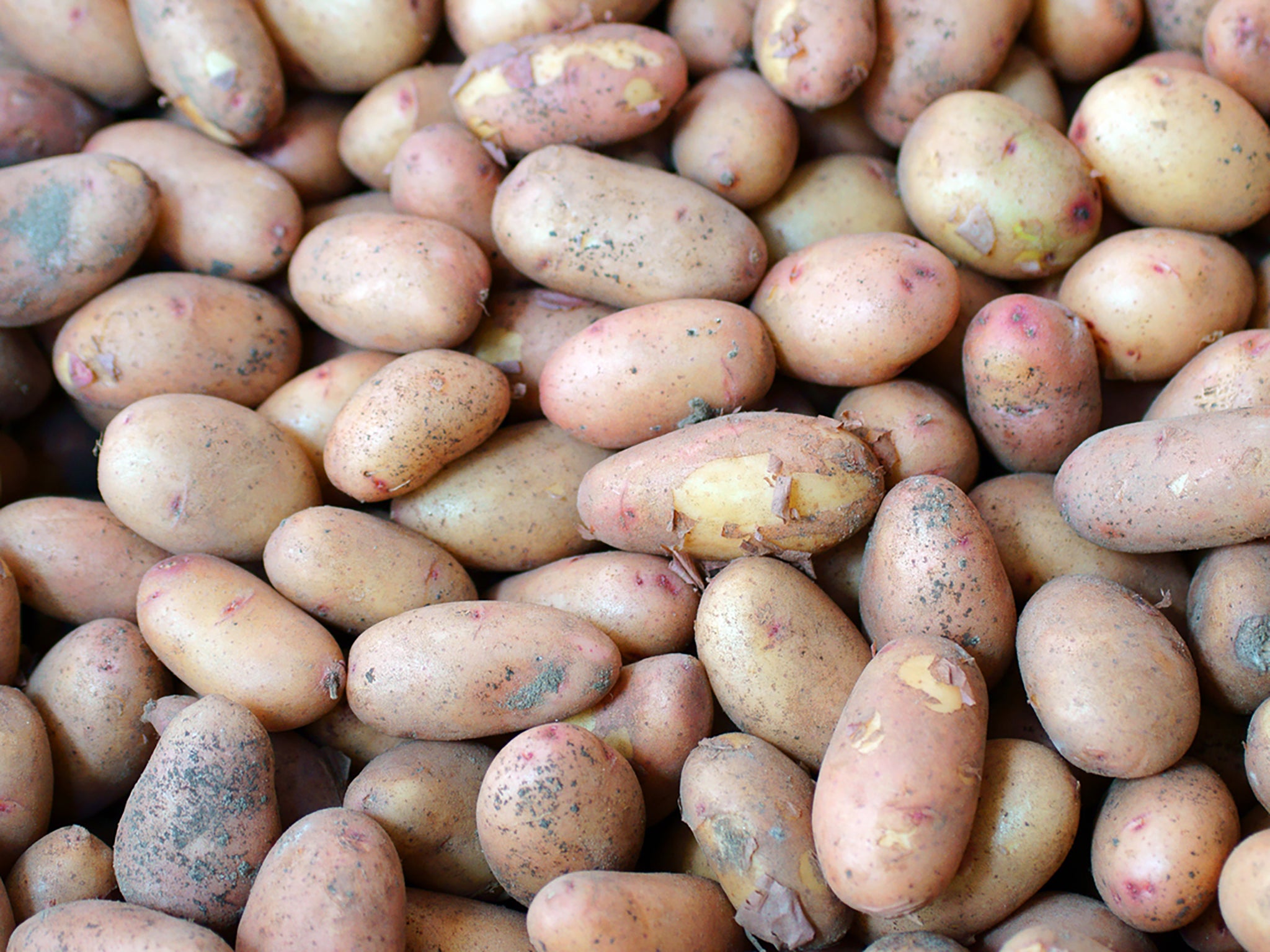
Your support helps us to tell the story
From reproductive rights to climate change to Big Tech, The Independent is on the ground when the story is developing. Whether it's investigating the financials of Elon Musk's pro-Trump PAC or producing our latest documentary, 'The A Word', which shines a light on the American women fighting for reproductive rights, we know how important it is to parse out the facts from the messaging.
At such a critical moment in US history, we need reporters on the ground. Your donation allows us to keep sending journalists to speak to both sides of the story.
The Independent is trusted by Americans across the entire political spectrum. And unlike many other quality news outlets, we choose not to lock Americans out of our reporting and analysis with paywalls. We believe quality journalism should be available to everyone, paid for by those who can afford it.
Your support makes all the difference.As April tiptoes in with its unpredictable weather and occasional bursts of pub garden-worthy sunshine, the UK’s culinary scene bursts into a riot of seasonal delights. Among the star-studded lineup are the divas of the veggie world: Jersey Royal potatoes, asparagus, watercress, rhubarb and radishes. Embracing these seasonal delights not only ensures fresher, more flavourful meals but also supports sustainable eating practices by reducing reliance on imported produce and minimising carbon footprints. Huzzah!
Jersey Royal potatoes, traditionally grown on the eponymous island in the English Channel, are celebrated for their delicate skins, buttery flesh and short season. Paired with crisp broad beans, peppery rocket (both also in season) and a tangy wild garlic dressing (from all that foraging I told you to do), they shine in a vibrant salad that encapsulates the essence of spring.
Watercress, with its peppery bite and vibrant green leaves, adds depth to dishes like our pan-fried trout with a zesty watercress sauce. This recipe not only celebrates the seasonality of watercress, but also promotes sustainability by swapping out no-no salmon for yes-please trout and incorporating other seasonal ingredients like dill and the aforementioned Jersey Royals.
Rhubarb, with its tart flavour and striking ruby-red stalks, takes centre-stage in a tangy compote infused with orange, cardamom and vanilla. Spooned over porridge or yoghurt, it offers a taste of spring’s bounty long after the season’s ended.
Radishes, known for their eye-popping colour and crunchy bite, are elevated in a quick-pickled rendition that adds a tangy crunch to smoked mackerel and horseradish cream on rye bread. This dish not only showcases the versatility of radishes and underscores the importance of eating seasonality, but it’s also on the plate in sub-15 minutes.
Lastly, asparagus, with its tender spears and nutty flavour, stars in a calorie-busting crustless quiche alongside savoury bacon and creamy eggs. This dish epitomises the essence of spring, offering a simple yet satisfying way to enjoy the season’s bounty.
By choosing locally grown (even in our own back gardens), sustainable ingredients, we can support our farmers, reduce our environmental impact, tantalise our taste buds, and feel downright smug.
Jersey Royal potatoes
Historically cultivated on the idyllic island of Jersey in the English Channel, these prized potatoes have become synonymous with springtime.
However, their appeal extends far beyond the island’s shores, as they can be successfully grown in gardens throughout the UK. The planting season for Jersey Royals spans from January to April, with a harvest typically occurring 12-13 weeks later, between March and July. This relatively short growing cycle means you only have a short window to enjoy them at their peak.
What distinguishes Jersey Royals is their purported signature taste, attributed to the unique soil composition and maritime climate of Jersey. Their delicate skins, easily removed before or after cooking, encapsulate a creamy, buttery flesh that is unrivalled in flavour and texture. Renowned for their thin, waxy skins, Jersey Royals require only gentle cooking, preserving their tender consistency and subtle sweetness.
While these potatoes shine when served simply on their own, boiled and adorned with a knob of butter, they also excel in a salad such as the one below, which combines their tender consistency and subtle sweetness with other seasonal ingredients such as crisp broad beans and peppery rocket, the tang of wild garlic foraged last month and the smoky richness of chorizo.
Jersey Royal potato salad with chorizo, broad beans and wild garlic dressing
April brings the peak season for Jersey Royals, broad beans and rocket, making it the perfect time to indulge in this fresh and flavourful dish. Enhanced with the smoky richness of chorizo and the peppery bite of rocket, this salad is also elevated by a zesty wild garlic dressing. If you foraged wild garlic in March, now is the time to bring its unique taste to your table.
Serves: 4
Prep time: 20 minutes | Cook time: 20 minutes
Ingredients:
500g Jersey Royal potatoes, washed and halved
200g broad beans, shelled
100g chorizo, sliced
50g rocket leaves
50g hard cheese (parmesan or manchego), shaved
For the wild garlic dressing:
Handful wild garlic leaves, finely chopped
2 tbsp olive oil
1 tbsp lemon juice
Salt and pepper to taste
Method:
1. Boil the Jersey Royal potatoes in a pot of salted water until tender, about 15-20 minutes. Drain and set aside to cool slightly.
2. Meanwhile, blanch the broad beans in boiling water for 2 minutes, then drain and transfer to a bowl of ice water to stop the cooking process. Once cooled, peel off the tough outer skins to reveal the vibrant green beans underneath.
3. In a skillet over medium heat, cook the sliced chorizo until crispy, about 3-4 minutes per side. Transfer to a plate lined with paper towels to drain excess grease.
4. Prepare the wild garlic dressing by combining chopped wild garlic leaves, olive oil, lemon juice, salt, and pepper in a small bowl. Whisk until well blended.
5. In a large mixing bowl, gently toss the cooked Jersey Royals, broad beans, crispy chorizo, and rocket leaves together.
6. Drizzle the wild garlic dressing over the salad and toss again to coat everything evenly.
7. To serve, transfer the salad to a platter or individual plates and garnish with shaved Parmesan or Manchego cheese.
Watercress
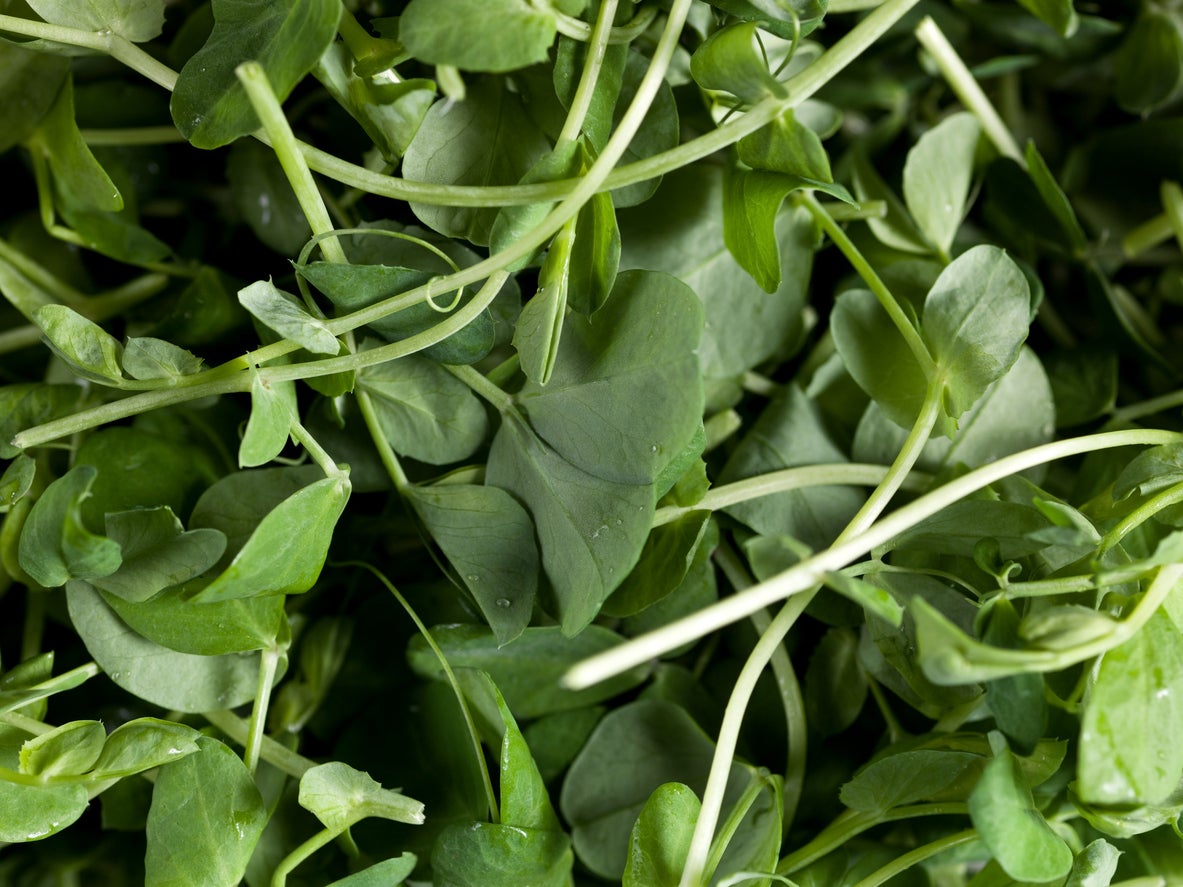
Watercress, a verdant and peppery leafy green, is a seasonal delight that starts to come into its peak season in the UK during the month of April. While readily available in supermarkets, watercress can also be easily cultivated at home, with outdoor plastic pots serving as the perfect vessels for its growth from March to August. With proper care and attention, this leafy herb can be harvested just four to seven weeks after planting, depending on prevailing weather conditions, ensuring a fresh and bountiful supply throughout the spring and summer months.
The taste of watercress is characterised by its distinctive peppery bite, which adds depth and complexity to salads, sandwiches and other culinary creations. Its versatility extends beyond mere garnish, though, as it can be blended into soups, sauces and pestos to infuse dishes with its bold flavour profile.
Watercress takes centre stage in our recipe with pan-fried trout in a luscious sauce, showcasing its vibrant taste and nutritional benefits. By incorporating other seasonal and sustainable ingredients, such as trout, dill and Jersey Royal potatoes, the dish not only celebrates the bounty of spring but also promotes eco-conscious eating practices.
Pan-fried trout with watercress sauce
This recipe for pan-fried trout with watercress sauce embraces the seasonality and sustainability of its ingredients. By opting for trout over salmon, a more environmentally friendly choice, and utilising the fresh flavours of watercress, dill, lemon and Jersey Royals – all in peak season – this dish highlights the best of springtime produce. Paired with a simple yet flavourful potato salad and seasonal greens, it’s a satisfying and eco-conscious meal that’s as delicious as it is responsible.
Serves: 4
Prep time: 15 minutes | Cook time: 15 minutes
Ingredients:
For the pan-fried trout:
4 trout fillets
Salt and black pepper to taste
2 tbsp olive oil
For the watercress sauce:
Handful watercress, stems removed
2 tbsp fresh dill, chopped
120g crème fraîche
Zest and juice of 1 lemon
2 tbsp olive oil
Salt and black pepper to taste
For the potato salad:
500g Jersey Royal potatoes, washed and halved
2 tbsp olive oil
1 tbsp wholegrain mustard
2 tbsp white wine vinegar
Salt and black pepper to taste
To serve:
Handful seasonal greens (eg spinach, kale or chard)
Instructions:
1. Begin by preparing the watercress sauce. In a blender or food processor, combine the watercress, dill, crème fraîche, lemon zest, lemon juice, olive oil, salt and black pepper. Blend until smooth and creamy. Set aside.
2. Next, cook the Jersey Royal potatoes in a pot of salted boiling water until tender, about 10-15 minutes. Drain and set aside to cool slightly.
3. While the potatoes are cooking, season the trout fillets with salt and black pepper. Heat 2 tablespoons of olive oil in a large skillet over medium-high heat. Add the trout fillets, skin side down, and cook for 3-4 minutes until the skin is crispy. Flip the fillets and cook for an additional 2-3 minutes until the fish is cooked through and flakes easily with a fork. Remove from heat and set aside.
4. In a large mixing bowl, whisk together the olive oil, wholegrain mustard, white wine vinegar, salt and black pepper to make the dressing for the potato salad. Add the cooked Jersey Royal potatoes and seasonal greens to the bowl, and gently toss until well coated.
5. To serve, divide the pan-fried trout fillets among plates, spooning the watercress sauce over the top. Serve alongside the Jersey Royal potato salad and seasonal greens.
Rhubarb
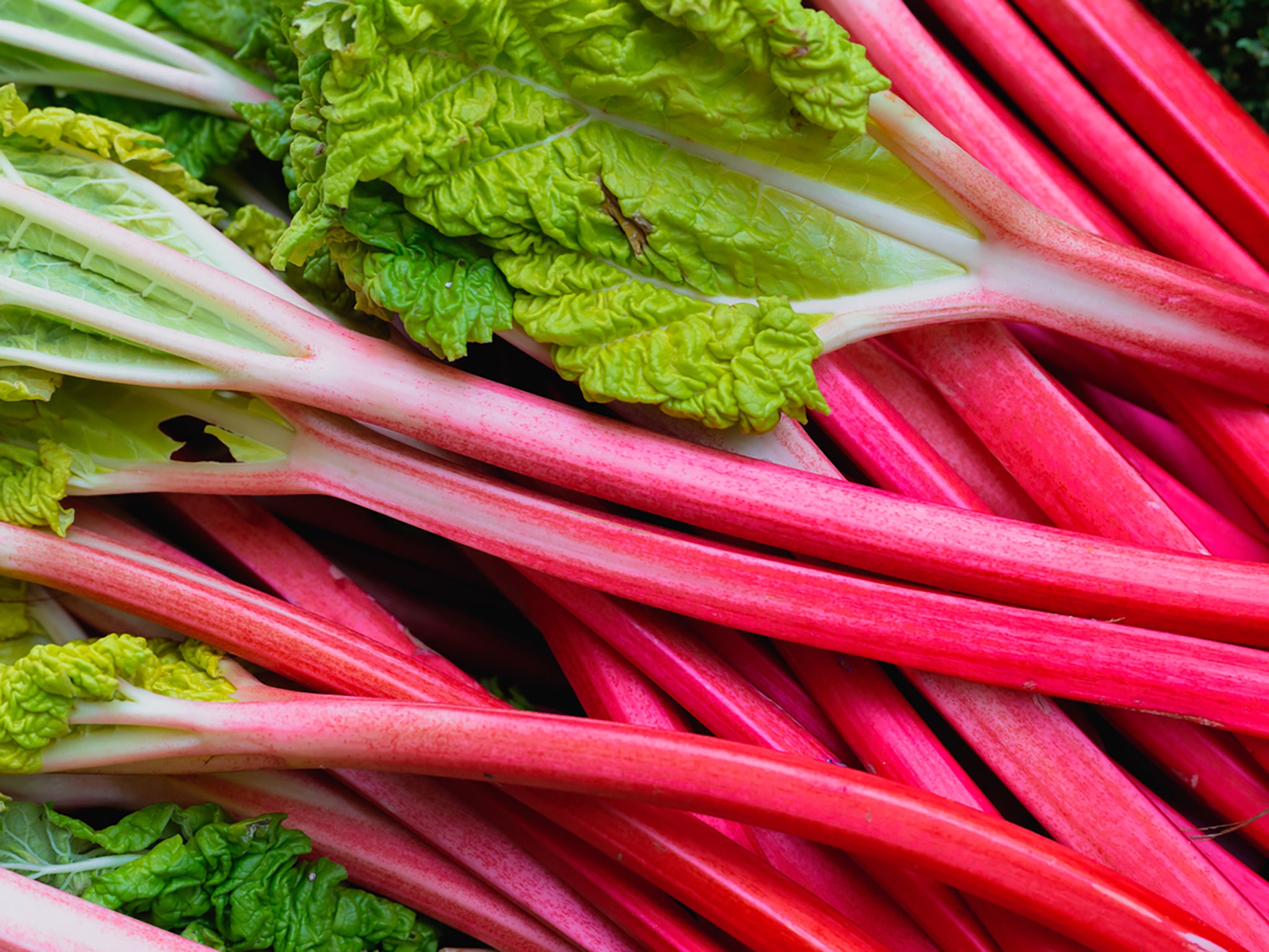
Rhubarb, heralding the arrival of spring with its vibrant hues and tangy flavour, is a quintessential seasonal delight that reaches its peak during the early months of the year. Cultivated for centuries for both culinary and medicinal purposes, rhubarb is a perennial vegetable known for its tart taste and striking ruby-red stalks.
Growing rhubarb at home is a rewarding endavour, requiring minimal maintenance and offering a bountiful harvest year after year. Rhubarb thrives in cool climates and well-drained soil, making it ideal for cultivation in British gardens. Planting rhubarb crowns in early spring or late autumn ensures a successful establishment, with the first harvest typically occurring in the second or third year after planting.
Rhubarb is delightfully tart, with a hint of sweetness that intensifies when cooked. Its versatility knows no bounds, as it lends its distinctive flavour to a wide array of dishes, both sweet and savoury. From classic desserts like rhubarb crumble, pies and compotes to savoury delights such as chutneys, sauces and even cocktails, rhubarbs adds a burst of tangy brightness to every recipe.
This rhubarb compote recipe offers a delicious and versatile way to make the most of fresh rhubarb, capturing its vibrant flavour and extending its enjoyment well beyond its peak season.
Tangy rhubarb compote with orange, cardamom and vanilla
Compote, a versatile fruit preserve, is the perfect way to extend the shelf life of fresh rhubarb while capturing its vibrant flavour. Spoon this delightful compote over porridge for a comforting breakfast, swirl it into yoghurt for a tangy treat, or use it as a topping for desserts like ice cream, cakes or pancakes. With its sweet-tart taste and aromatic spices, this rhubarb compote elevates any dish, adding a burst of seasonal flavour to your table.
Makes: about 2 cups
Prep time: 10 minutes | Cook time: 15 minutes
Ingredients:
500g rhubarb, washed and trimmed, cut into 2cm pieces
100g granulated sugar
Zest and juice of 1 orange
3 cardamom pods, lightly crushed
1 vanilla pod, split lengthwise
100ml water
Method:
1. In a medium saucepan, combine the rhubarb, granulated sugar, orange zest, orange juice, crushed cardamom pods, split vanilla pod and water.
2. Place the saucepan over medium heat and bring the mixture to a gentle simmer.
3. Cook the rhubarb, stirring occasionally, for about 10-15 minutes or until it breaks down into a thick compote-like consistency.
4. Once the rhubarb has softened and the compote has thickened, remove the saucepan from the heat.
5. Allow the compote to cool slightly before transferring it to a clean jar or container. Remove the vanilla pod and cardamom pods.
6. Serve the rhubarb compote warm or chilled, as desired. It can be stored in the refrigerator for up to a week.
Radishes
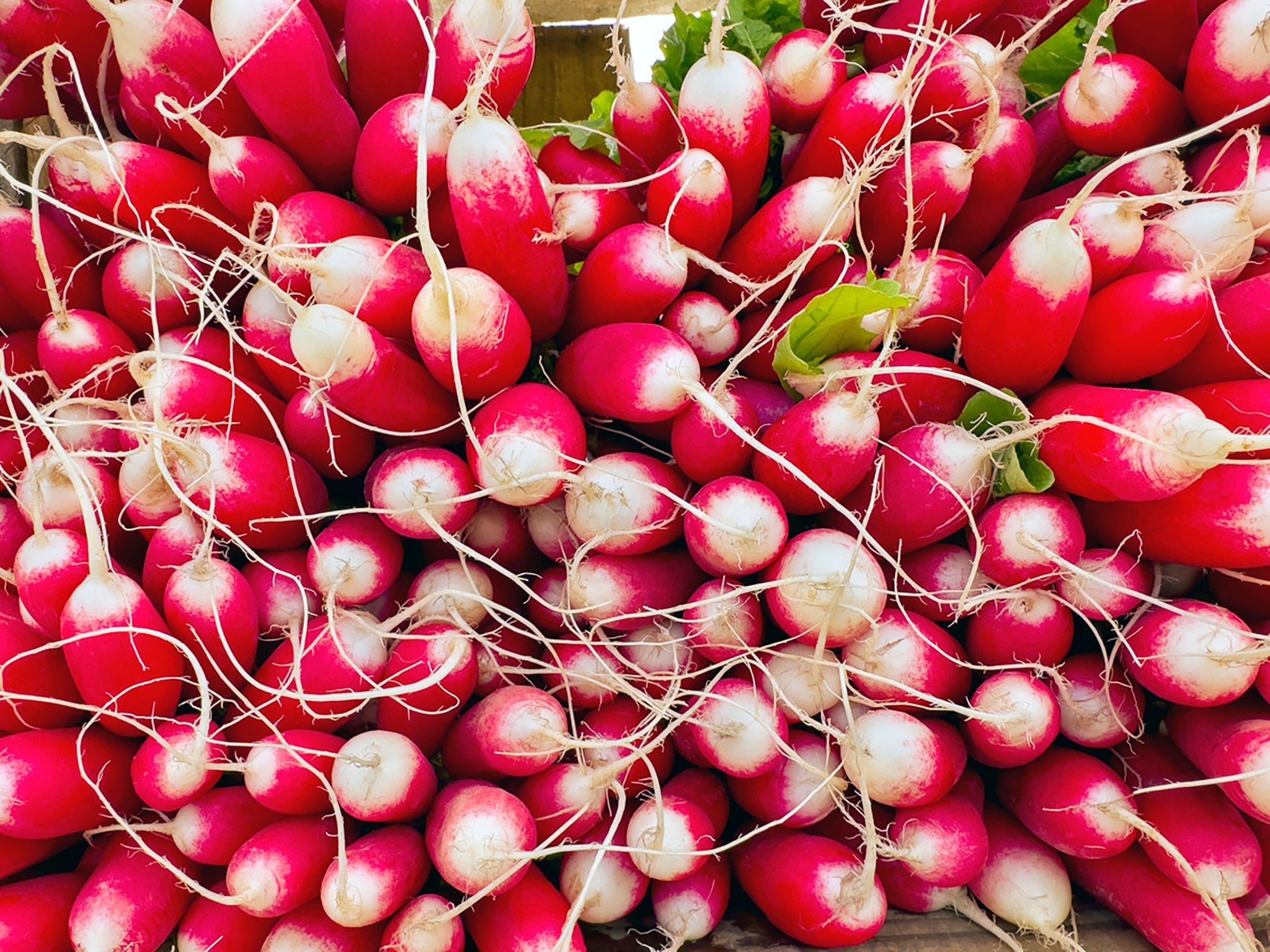
With their vibrant colour, distinctive peppery flavour and crunchy bite, radishes can add a refreshing element to a variety of dishes, whether sliced thinly for a colourful garnish or incorporated into a flavourful recipe.
Growing radishes at home is straightforward, ideal for both novice and experienced gardeners alike. They thrive in cool weather and well-drained soil, making them perfect for planting in early spring or late summer. With a relatively short growing season of about three to four weeks, radishes can be harvested as soon as their roots reach maturity, typically around three to four weeks after planting. This makes them an excellent choice for gardeners looking for a quick and rewarding crop.
Radishes’ crisp texture and pepper flavour make them perfect for adding a zesty crunch to salads, sandwiches and wraps. They can also be pickled, roasted or sauteed to bring out their natural sweetness and depth of flavour. Our recipe for smoked mackerel and horseradish cream on rye bread with quick pickled radishes offers a quick and easy option for enjoying this springtime vegetable, showcasing their versatility and vibrant taste in a deliciously simple dish.
Smoked mackerel and horseradish cream on rye bread with quick pickled radishes
Perfect for a light lunch or snack, this dish requires no cooking, making it an ideal choice for busy days. The tangy crunch of the quick-pickled radishes complements the smoky richness of the mackerel, while the zesty horseradish cream adds a creamy kick.
Makes: 4 open-faced sandwiches
Prep time: 15 minutes
Ingredients:
For the quick pickled radishes:
1 bunch radishes, thinly sliced
120ml white vinegar
60ml water
30g granulated sugar
5g salt
5g black peppercorns
For the horseradish cream:
120g crème fraîche or sour cream
30g prepared horseradish
15ml lemon juice
Salt and black pepper to taste
To serve:
4 slices of rye bread
200g smoked mackerel fillets, flaked
Method:
1. In a small saucepan, combine the white vinegar, water, granulated sugar, salt and black peppercorns. Bring to a simmer over medium heat, stirring until the sugar and salt are dissolved.
2. Place the thinly sliced radishes in a clean jar or container. Pour the hot vinegar mixture over the radishes, ensuring they are fully submerged. Let cool to room temperature, then cover and refrigerate for at least 30 minutes before using.
3. Meanwhile, prepare the horseradish cream by mixing together the crème fraîche or sour cream, prepared horseradish, lemon juice, salt and black pepper in a small bowl. Adjust seasoning to taste.
4. Toast the rye bread slices until lightly crisp.
5. To assemble the sandwiches, spread a generous amount of horseradish cream on each slice of rye bread. Top with flaked smoked mackerel and a few slices of quick-pickled radishes.
6. Serve immediately and enjoy the delightful combination of flavors and textures.
Asparagus
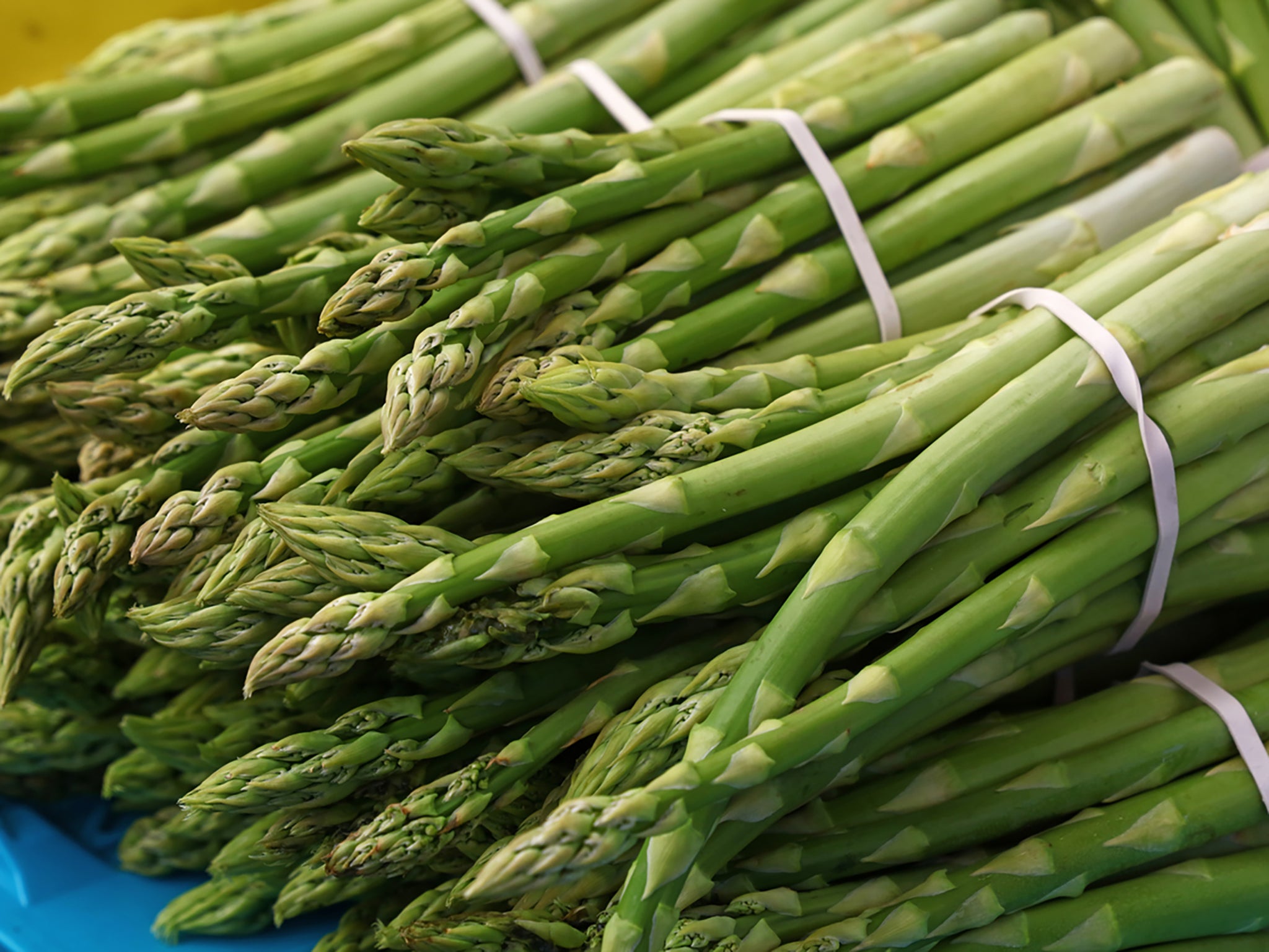
Known for its tender texture and slightly nutty, earthy flavour, asparagus is a versatile ingredient that can be used in a variety of dishes, from salads and soups to stir-fries and quiches.
Growing asparagus at home requires patience but yields delicious results. Asparagus is typically planted in the early spring, around March or April, and takes about two to three years to become established before it can be harvested. Once established, asparagus can be harvested in the UK from late April to early June, with spears snapped or cut off just above ground level.
When it comes to cooking asparagus, the options are endless. It can be lightly steamed, roasted, grilled or even sauteed, allowing its natural flavour to shine through. Asparagus pairs well with a variety of flavours and ingredients, from classic combinations like butter and lemon to more adventurous pairings with bacon, cheese and herbs.
Our recipe for a crustless asparagus and bacon quiche is the perfect example of how to enjoy the season. By combining tender asparagus spears with savoury bacon and creamy eggs, this quiche celebrates the freshness and versatility of this springtime vegetable in a delicious and satisfying dish that can be enjoyed at breakfast, brunch or dinner.
Crustless asparagus and bacon quiche
Bursting with flavour and packed with nutritious goodness, this quiche is the perfect way to enjoy the freshness of asparagus during its peak season. By omitting the crust, this recipe keeps things simple, fuss-free and healthy, allowing the vibrant flavours to shine through. Whether served warm for breakfast, lunch or dinner, this crustless quiche is sure to be a hit with family and friends alike.
Serves: 6
Prep time: 15 minutes | Cook time: 30 minutes
Ingredients:
250g asparagus, trimmed and cut into bite-sized pieces
6 slices bacon, cooked and crumbled
1 small onion, finely chopped
100g grated cheese (cheddar, Gruyère, or Swiss)
6 large eggs
200ml milk or heavy cream
Salt and pepper to taste
1 tbsp olive oil
Method:
1. Preheat your oven to 180C (350F). Grease a 9-inch pie dish with olive oil and set aside.
2. In a skillet over medium heat, sauté the chopped onion until translucent, about 5 minutes. Add the asparagus pieces and cook for an additional 3-4 minutes until slightly tender. Remove from heat and let cool slightly.
3. In a large mixing bowl, whisk together the eggs and milk or cream until well combined. Season with salt and pepper to taste.
4. Arrange the cooked asparagus and crumbled bacon evenly in the prepared pie dish. Sprinkle grated cheese over the top.
5. Pour the egg mixture over the filling in the pie dish, ensuring that everything is evenly coated.
6. Place the quiche in the preheated oven and bake for 25-30 minutes, or until the center is set and the top is golden brown.
7. Once cooked, remove the quiche from the oven and let it cool for a few minutes before slicing and serving.
Join our commenting forum
Join thought-provoking conversations, follow other Independent readers and see their replies
0Comments